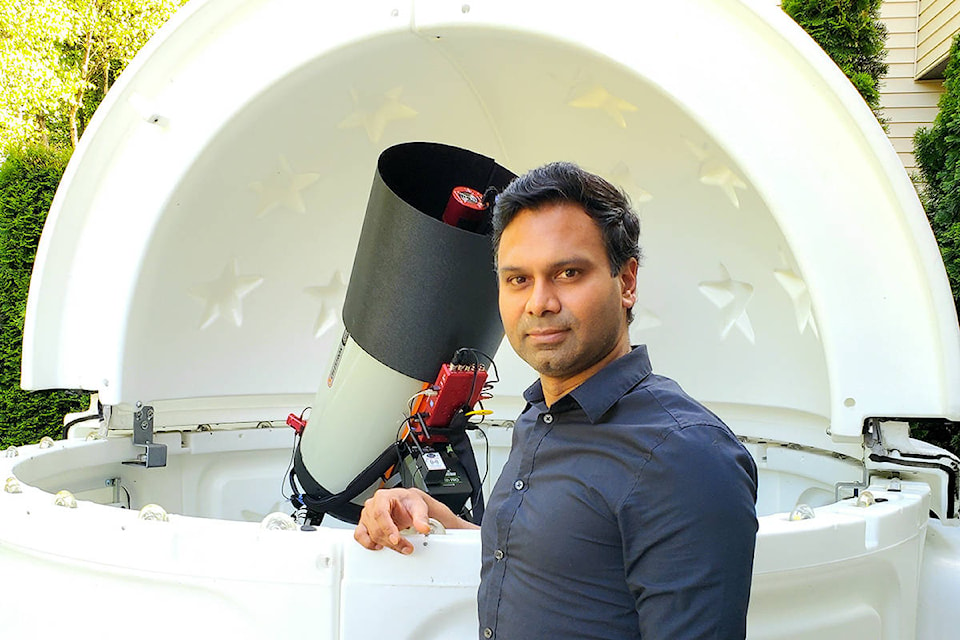Citizen science is alive and well in Maple Ridge, and a local astronomy hobbyist would like to encourage others to take up the mantle.
Balaji Kumar identified a dwarf nova outburst from his backyard observatory in the Silver Hills neighbourhood on May 7.
“I want people to know this can be done from anybody’s backyard,” he said, adding he hopes it inspires more locals with an interest in the night sky to help the scientific community.
Kumar began the operation of looking for asteroids, comets and transient events about four weeks ago, and was pleased by the discovery.
“It’s very exciting,” he said.
READ MORE: SpaceX Falcon 9 rocket debris spotted burning in night’s sky
READ MORE: Flash of luck: Astronomers find cosmic radio burst source
Space is more than just a hobby for Kumar.
He is also an engineer who designs space crafts for a living with MDA, a large Canadian space firm.
In 2013, he began photographing the night sky, but said he got bored of doing the same thing, and took up asteroid hunting.
Large observatories across the world provide the coordinates to possible asteroids, and citizen scientists confirm their existence.
Kumar was enjoying taking part in the pastime, but decided to put his impressive backyard set-up to better use.
A 14-inch telescope sits on a mount, and is housed under a dome.
Also contained within is a computer, which controls the movement of the telescope, and collects data.
The evening’s finds are sent to a second computer within Kumar’s house, which processes the data, and produces a list of objects that might fit the parameters of what he is looking for.
“Usually there are lots of objects, but it’s often 99.9 percent garbage,” he said.
“But then there are things like this (dwarf nova outburst). When I first saw it, I thought - OK, wow, now that’s something!”
The phenomenon usually occurs in binary star systems, which are systems containing two stars.
One small, dense star –massive in weight – in orbit with another larger star, which is dying or dead.
The smaller of the two uses its gravitational pull to steal mass in the form of hydrogen from its larger orbit partner over the course of several years.
It accumulates the gas around itself, and after many decades pressure builds up, and temperatures reach in the hundreds of millions of degrees Celsius.
The hydrogen fuses into helium, and the outside layer starts to explode.
This particular dwarf nova outburst took place in the Cygnus constellation, which is about 3,000 light years away.
For reference, this outburst would have occurred around the same time King Solomon completed construction of the First Temple in Jerusalem.
Kumar says they are somewhat rare to spot.
In the instance he recorded, the smaller star brightened up to 200 times its ordinary luminosity.
In many cases it takes a few weeks to fade away, so many other astronomers are observing it since the sighting.
Of course, like all scientific findings, the discovery needed to be peer reviewed, so Kumar approached Brazil’s Paulo Holvercem -who designed the software he uses – to help.
Since the original sighting, Kumar also has found another transient object, and is hoping to discover many more.
Have a story tip? Email: ronan.p.odoherty@blackpress.ca
Like us on Facebook and follow us on Twitter.
